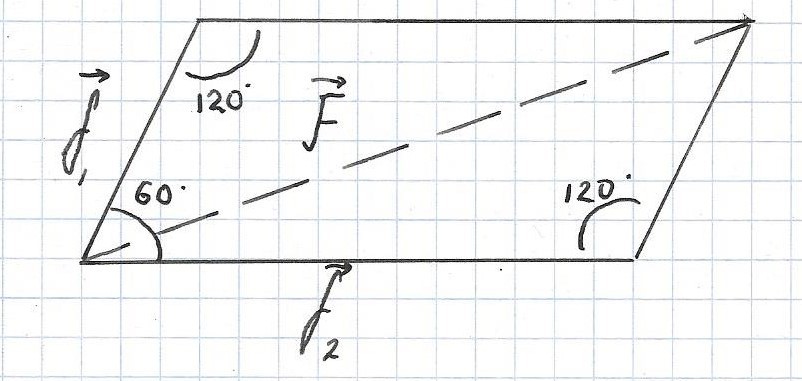Vector problem
The vector F is the sum of vectors f 1 and f 2 such that ∢ ( f 1 , f 2 ) = 6 0 ° and ∣ f 1 ∣ : ∣ f 2 ∣ = 2 : 3 . Let x = the angle enclosed by f 1 and F , and let y = the angle enclosed by f 2 and F (both in degrees). Find the value of y − x correct to 3 significant figures.
Note. Answer should be positive.
The answer is 13.2.
This section requires Javascript.
You are seeing this because something didn't load right. We suggest you, (a) try
refreshing the page, (b) enabling javascript if it is disabled on your browser and,
finally, (c)
loading the
non-javascript version of this page
. We're sorry about the hassle.
1 solution
Moderator note:
The question phrasing could be improved by being clear with what you want to state. For example, you actually refer to the ratio of the magnitudes, instead of the ratio of the vectors directly.
Also, we generally take counter-clockwise angles as positive. This affects the positioning of your solution, but it's fine otherwise.
It is noticeable that the vectors create a parallelogram as shown in the diagram
Due to the fact that opposite angles in a parallelogram equal each other, we know the angles inside are 60, 60, 120 and 120 degrees. Furthermore, as f 1 : f 2 , then they must also in ratio to F . We can use the cosine rule to find F . a 2 = b 2 + c 2 − 2 b c cos A ∴ F 2 : f 1 2 + f 2 2 − 2 f 1 f 2 cos 1 2 0 F 2 : 2 2 + 3 2 − 2 ( 2 ) ( 3 ) cos 1 2 0 F 2 = 1 9 ∴ F = 1 9
Therefore we may conclude that f 1 : f 2 : F so that 2 : 3 : 1 9 .
To find the remaining angles, all that remains is to use the Cosine Rule. cos A = 2 b c b 2 + c 2 − a 2 . Substituting the correct values to find the angle enclosed by f 2 and F , we get cos − 1 ( 2 × 1 9 × 2 ( 1 9 ) 2 + 3 2 − 2 2 ) = 3 6 . 6 ° (3sf). This equals y . Further more since x + y must equal 60 degrees, x = 2 3 . 4 ° .
Therefore y − x must equal 13.2.